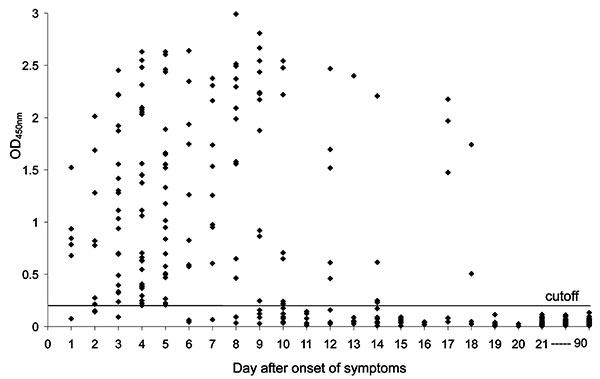Volume 10, Number 11—November 2004
Dispatch
Nucleocapsid Protein as Early Diagnostic Marker for SARS
Figure 1

Figure 1. N protein detection in 420 serum samples from 317 patients with severe acute respiratory syndrome (SARS). Data represent the optical density at 450 nm (OD450) of undiluted serum samples. To establish the normal range of the N protein–capture enzyme-linked immunosorbent assay, serum specimens from 400 healthy blood donors were analyzed. The mean OD450 for these specimens, as determined by the assay, was 0.078, with a standard deviation of 0.023. The cutoff OD450 of the assay was then calculated as follows: cutoff = mean of OD450 from 400 normal sera + 5 x standard deviations = 0.19. Solid line represents cutoff value. The result was considered positive if a sample yielded OD450 above the cutoff.
Page created: April 22, 2011
Page updated: April 22, 2011
Page reviewed: April 22, 2011
The conclusions, findings, and opinions expressed by authors contributing to this journal do not necessarily reflect the official position of the U.S. Department of Health and Human Services, the Public Health Service, the Centers for Disease Control and Prevention, or the authors' affiliated institutions. Use of trade names is for identification only and does not imply endorsement by any of the groups named above.